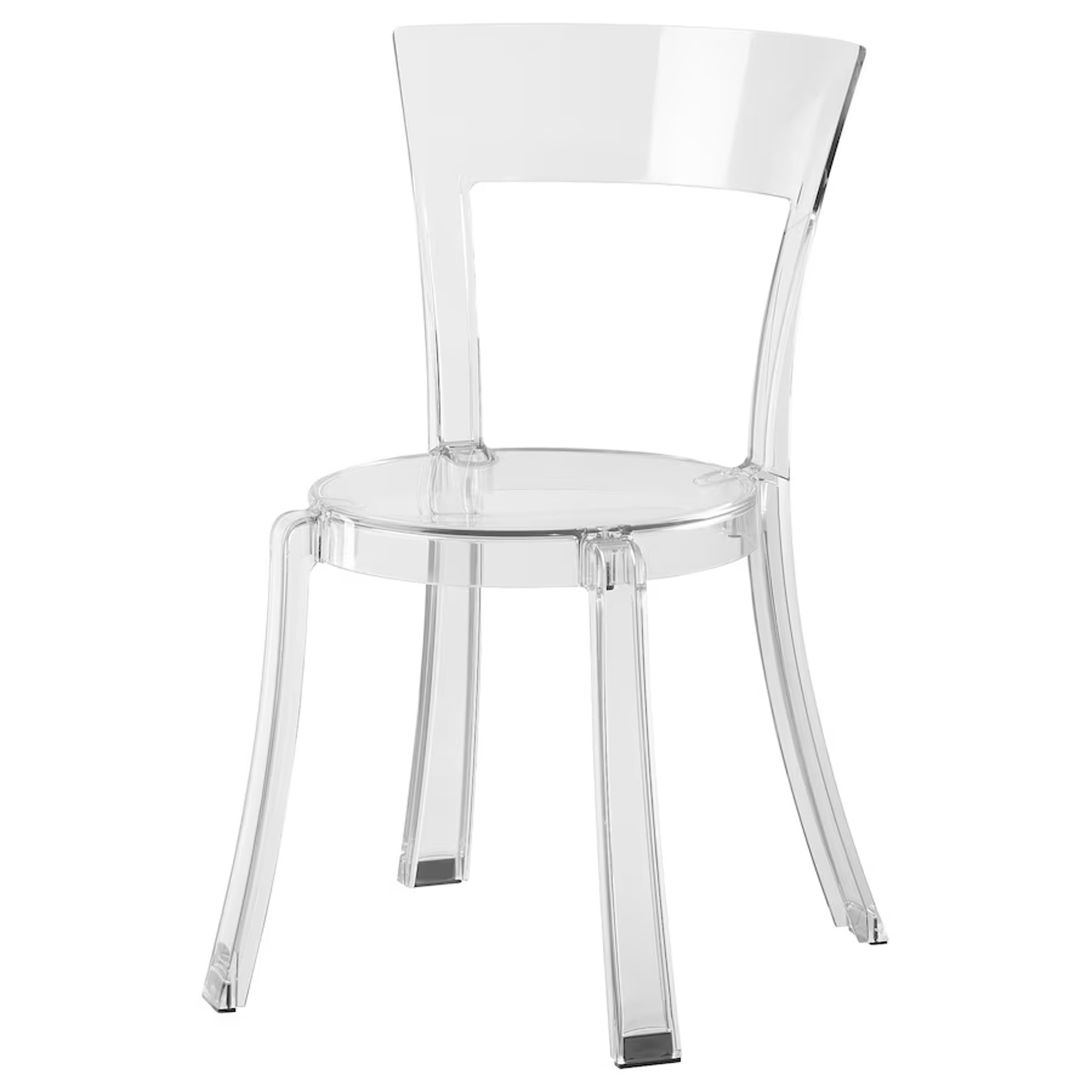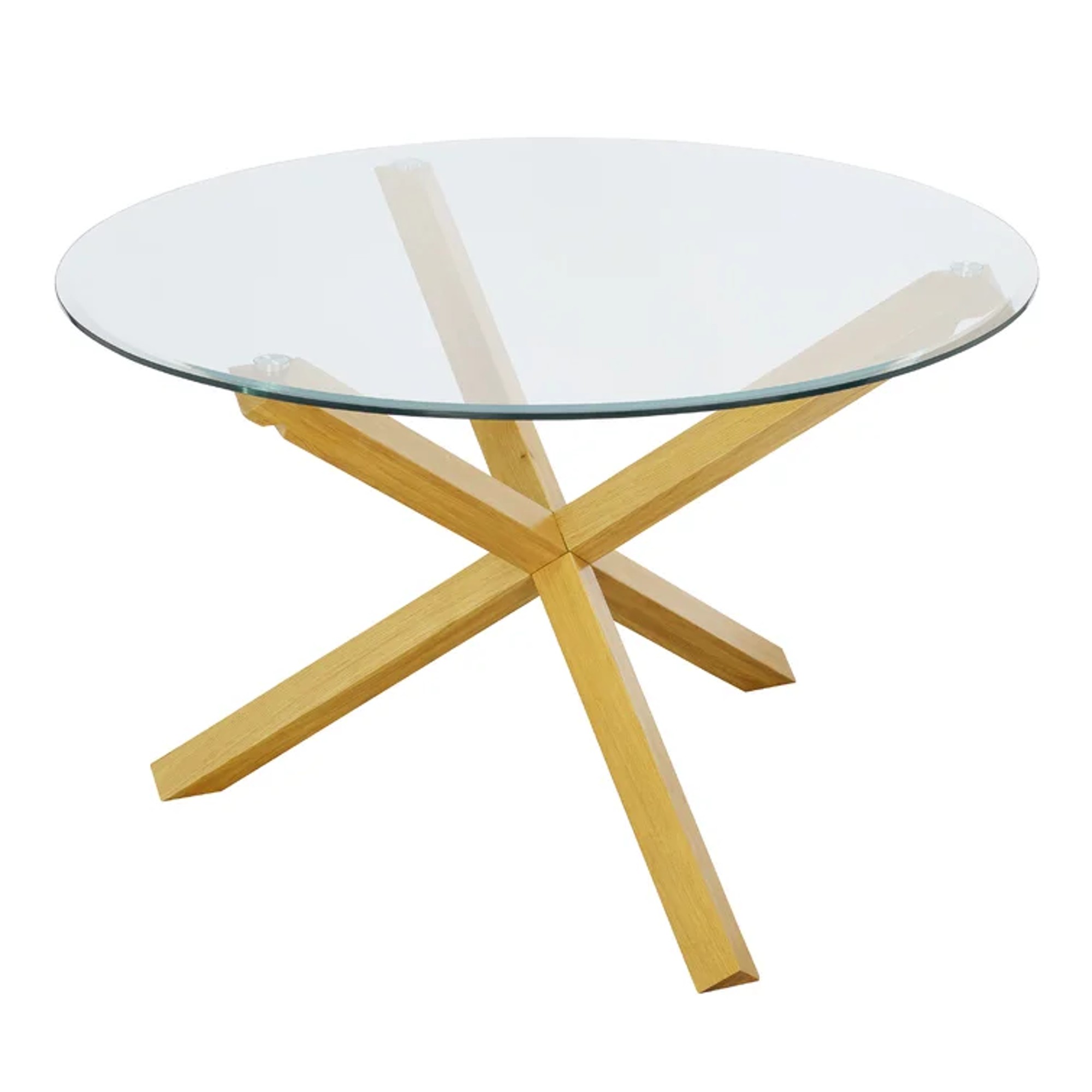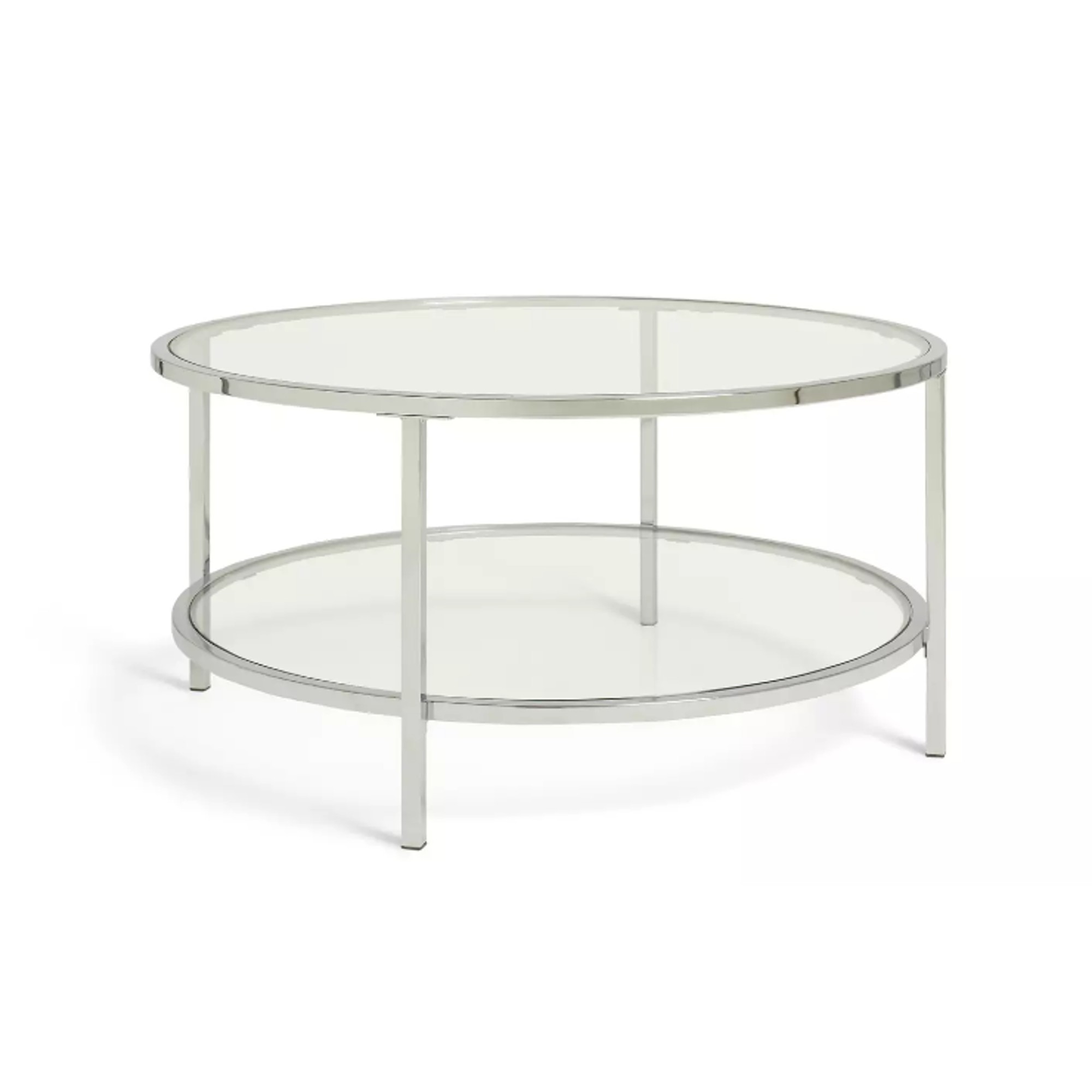This noughties-inspired furniture trend is the ultimate trick to make small living spaces look bigger
Who knew we'd be seeing this trend back in fashion


The Y2K revival trend continues to reign over all facets of lifestyle as new (or should that be old?) micro trends of the era keep popping up. One of the noughties interior styles that we’re most excited about having a resurgence is the transparent furniture trend. Which as it happens is a great small living room idea to maximise on a small-scale living space.
It might be a retro trend, but it still manages to look super modern. Plus the use of clear glass, acrylic or perspex in this trend is a surefire way for making a small living room look bigger.
See-through furniture isn't the easiest trend to style - things can get tacky real fast with these Y2K trends. However, we've spoken to design experts to find out how to get the look just right, and the best pieces to snap up now to nail the look at home.
Transparent furniture trend
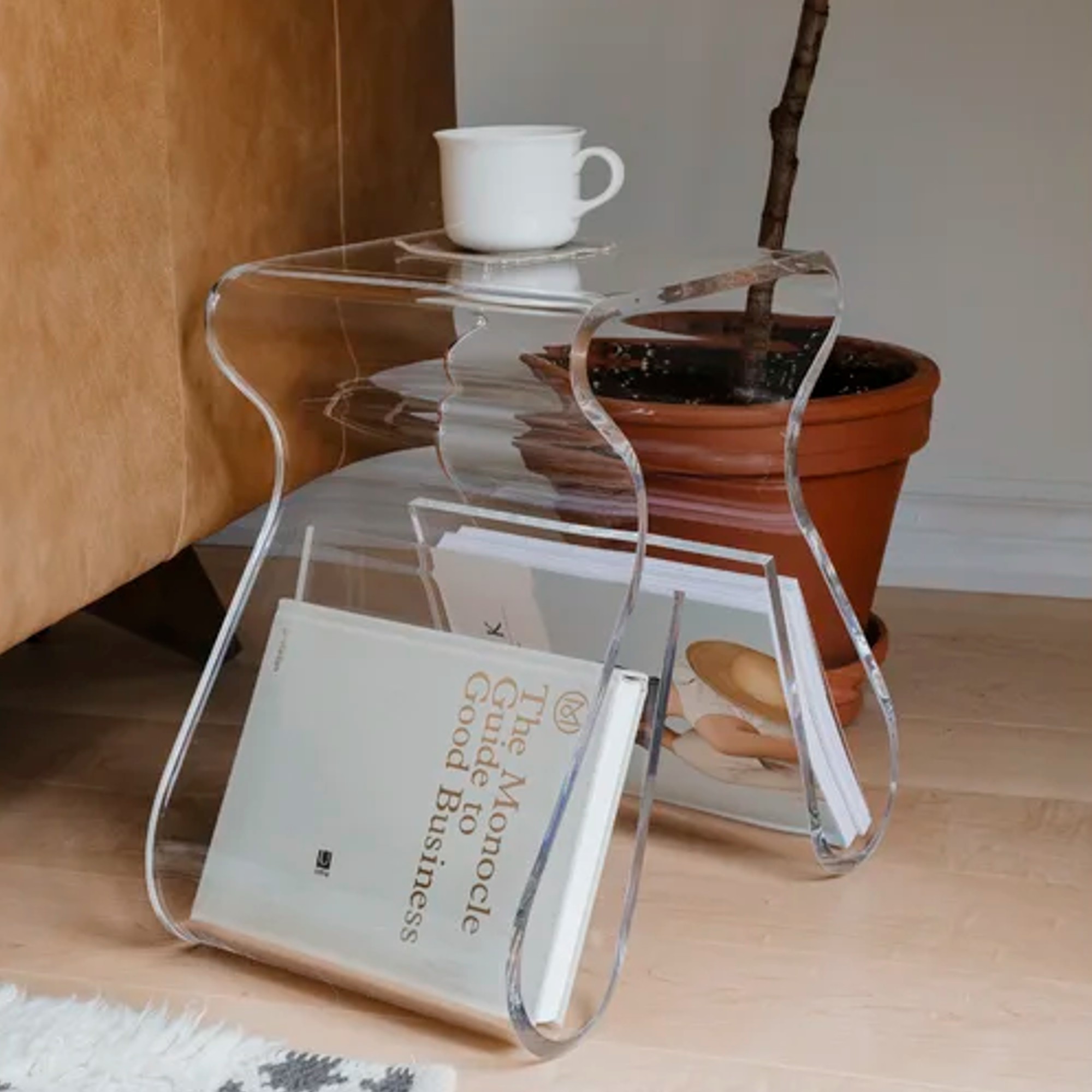
The noughties-inspired trend was made popular in the early 2000s with the release of the Kartell Louis Ghost Armchair, sold at Heal’s for £294, which is now considered a design classic.
‘Whilst transparent acrylic furniture has been around since the 1960 and 70s, it was Phillipe Starck’s Louis Ghost Chair that really propelled the trend into people’s homes in the early noughties,’ says Lucy Mather, design expert from Arighi Bianchi.
Sabina Miller, buying director at Heal’s, agrees, ‘Some of the most iconic furniture designers of the last century have paid homage to this trend, from the iconic Noguchi coffee table designed by Isamu Noguchi in 1944, to the iconic Louis Ghost chair designed by Philippe Starck for Kartell in 2002.’
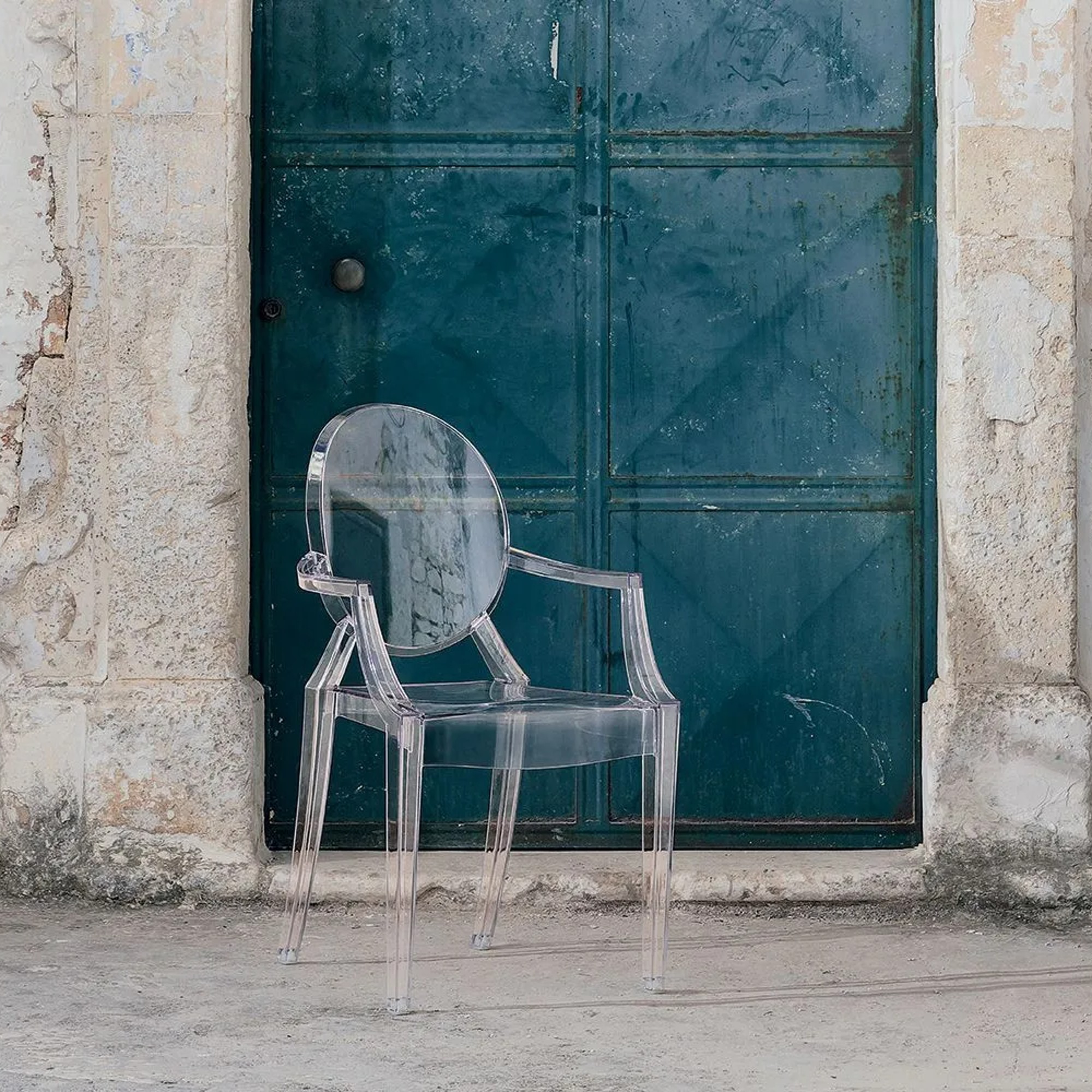
And it’s not just the current noughties obsession that’s fuelling this latest home decor design trend. It’s celebrities and influencers like Molly-Mae Hague and Rochelle Humes with their transparent office desks and baby cots respectively. Molly-Mae unveiled her daughter’s minimalist nursery on her Instagram earlier this year, one couldn’t help but notice Bambi’s clear acrylic cot.
Sign up to our newsletter for style inspiration, real homes, project and garden advice and shopping know-how
‘Of course, Molly-Mae Hague also did her bit for acrylic furniture sales at the beginning of the year when she shared a picture of newborn, Bambi, in an acrylic cot – proving that this style can work in any room in the home,’ Lucy says.
And while Molly-Mae is not one in need of space-saving solutions, this trend is just the thing to create an optical illusion of a larger space. ‘The great thing about transparent pieces is that they create an illusion of space and lightness, making them perfect for those who want to make a room feel bigger,’ says Narchie founder Harriet Pringle.
Get the look
How to style the trend
If you want to make your home appear lighter and airier, then clear glass or acrylic furniture is perfect for that.
‘The transparent structures act as a carrier for other decorative elements such as rugs, artwork, flooring or accessories allowing them to remain centre stage,’ Sabina explains. ‘Acrylic furniture is strong yet lightweight, making it not only a practical choice for homes but also a neutral canvas.’
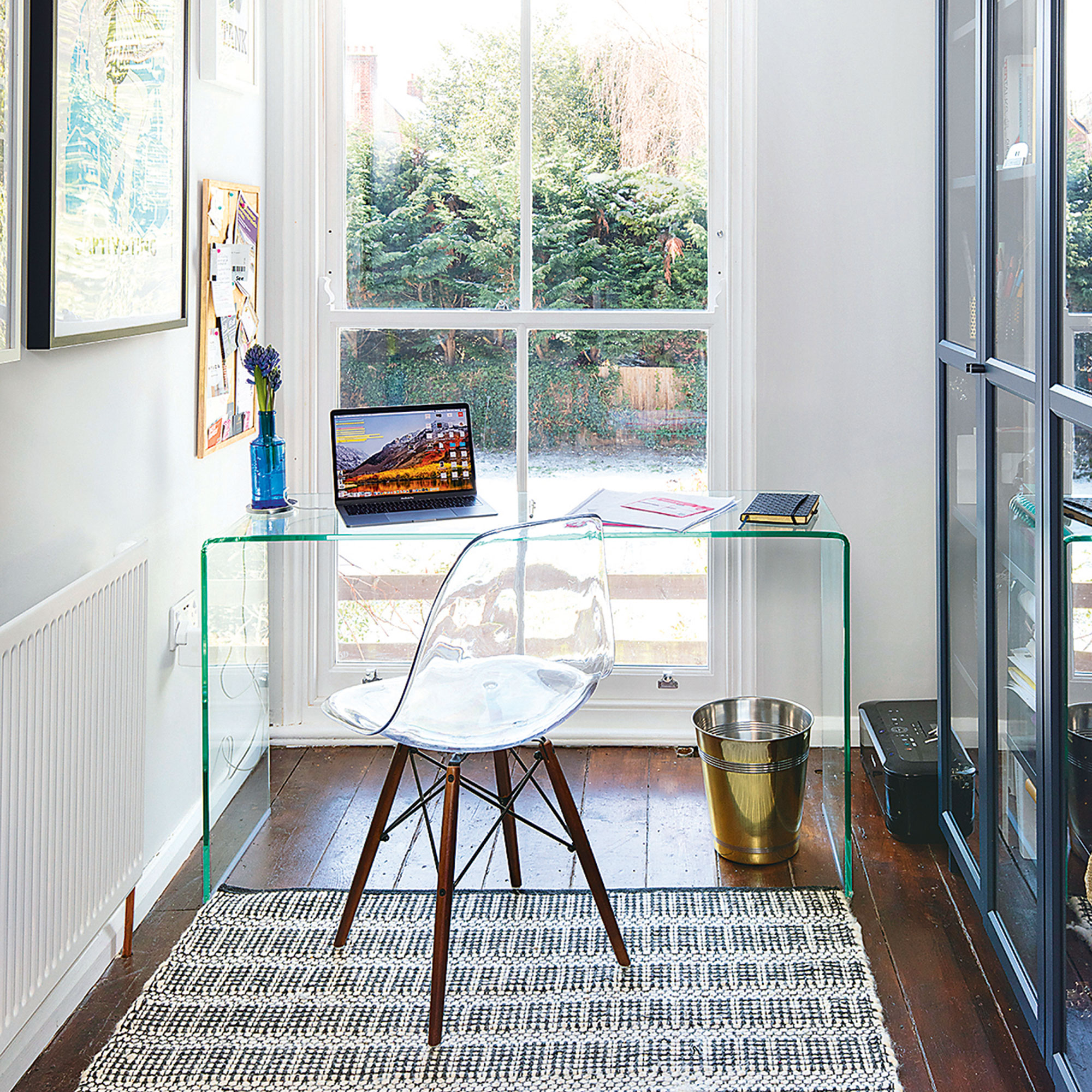
Lucy concludes with her styling tips, ‘Clear acrylic and glass pieces can easily be mixed and matched with your existing furniture – adding a new dimension to a space without overpowering it or creating colour clashes.’
‘Think also how you can use lighting to best effect with these pieces. Placing a lamp on a transparent coffee table, for example, can really help to elevate your other soft furnishings and accessories by literally lighting them up.’
Now that’s something we can get behind.

Sara Hesikova has been a Content Editor at Ideal Home since June 2024, starting at the title as a News Writer in July 2023. She is now also the Ideal Home Certified Expert in Training on Furniture, and so far has tested over 150 different sofas.
Graduating from London College of Fashion with a bachelor’s degree in fashion journalism in 2016, she got her start in niche fashion and lifestyle magazines like Glass and Alvar as a writer and editor before making the leap into interiors, working with the likes of 91 Magazine and copywriting for luxury bed linen brand Yves Delorme among others.

